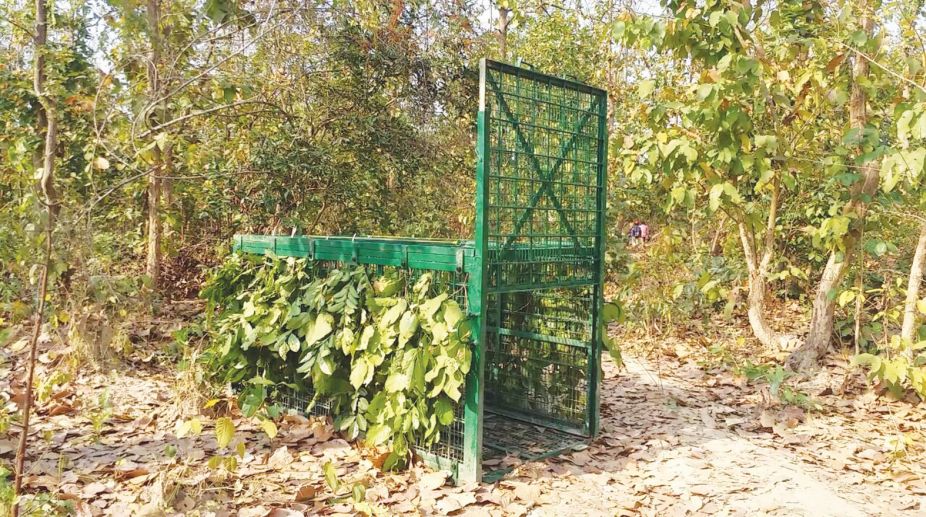The forest department has set up two cages inside Madhupur forest in Lalgarh, today, to trap the full grown adult Bengal tiger that was sighted roaming in the erstwhile Maoist dominated forests on Friday on remotely activated camera traps.
The forest officials have used goats as baits to lure the tiger and villagers living in surrounding areas have been asked not to go inside the forests. Mr Rabindranath Saha, divisional forest officer (Midnapore division) said, “A team comprising 15 members including four experts from Sundarbans has been entrusted to monitor the entire process. They have installed two iron cages at two different locations inside the forest at Madhupur and now it is our luck whether the big cat is lured at the baits”.
Mr Saha, however, confirmed that no other tiger has been sighted on the camera traps yet and even no new pugmarks have been spotted.
Yesterday, two of the seven cameras forest officials put up caught the image of the tiger and what had been thought to be a rumour turned out to be true. The people in the villages of Melkheria and Madupur in Lalgarh had complained to forest officials they could sense the presence of a tiger in the forest.
Initially, the forest officials didn’t believe the villagers and even lodged an FIR for spreading rumour. “Some villagers claimed the animal that had taken away their cattle was a tiger, but we did not believe them. Yet, to be sure we put up seven cameras at different locations in Lalgarh.
Two of these cameras caught the image of the tiger”, Mr Saha had said. Mr Saha also said there was no report of the presence of tiger in the locality during the past seven decades. Asked from where the tiger could possibly have entered into Lalgarh, he said: “It is very difficult to answer the question. We are exploring all possibilities.
Camera traps will continue to be there. It might have come from Simlipal tiger reserve in neighbouring Odisha.” Experts who have joined in the operation to trap the tiger said if the tiger travelled from Simplipal it would be one of the longest tiger migration in India till date. In 2008, a radio-collared tigress from Madhya Pradesh’s Kanha had travelled almost 250km in four months to reach Maharashtra’s Pench Tiger Reserve.
Experts said territorial animals like the tiger can cover such distances primarily to find mates and prey. Mr Ravi Kant Sinha, chief wild life warden said, “We have planned to shift the big cat to Jharkhali in Sundarbans for the time being.”
Mr Saha also said that he would also coordinate with officials of the Wildlife Institute of India (WII) to match the tiger’s stripe patterns with those available in their database to find out where the animal has come from.






